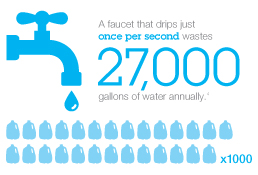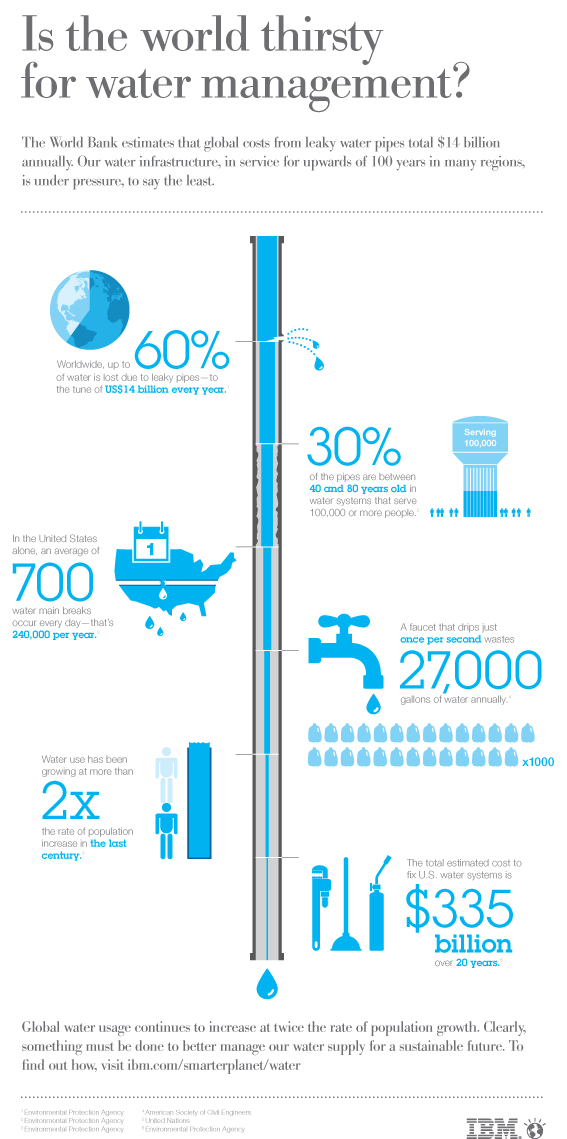 IBM created a water infographic to highlight some alarming statistics about how much water is wasted due to leaks in our water distribution infrastructure. A third of the water infrastructure in the US is 40 to 80 years old. Therefore, replacing this old infrastructure and repairing leaks is estimated to cost $335 billion over the next 20 years. In terms of water waste, not only do the leaky faucets in our homes waste a lot of water, but there is an average of 700 water main breaks each day across the US which wastes a tremendous amount of water. These pipe leaks are also exasperated by drought conditions, currently affecting a big part of the US.
IBM created a water infographic to highlight some alarming statistics about how much water is wasted due to leaks in our water distribution infrastructure. A third of the water infrastructure in the US is 40 to 80 years old. Therefore, replacing this old infrastructure and repairing leaks is estimated to cost $335 billion over the next 20 years. In terms of water waste, not only do the leaky faucets in our homes waste a lot of water, but there is an average of 700 water main breaks each day across the US which wastes a tremendous amount of water. These pipe leaks are also exasperated by drought conditions, currently affecting a big part of the US.
Update: The statistics in this infographic may be suspect. Michael Campana (@WaterWired) researched it a bit in this post and found that dripping faucets don’t waste 27,000 gallons per year, but only 2,700 gallons per year.
So What Can I Do?
While the issues represented in the infographic have to be solved on a municipal scale by municipalities and water providers, there are some action steps that you, the homeowner, can take to do your part.
We can all reduce the amount of water we use on a daily basis. During the summer months, many cities report that their water customers use more water for outdoor irrigation than inside the house. Therefore, while conserving water indoors is helpful, the larger bang-for-the-buck conservation gains happen outdoors.
Here are a few suggestions to tame your outdoor water usage:
- Reduce the amount of landscaping that requires intensive watering such as turf grass areas and replace with drought tolerant plants or xeriscaped areas
- Find ways to make your underground irrigation system more efficient by fixing leaks and upgrading system components
- Invest in supplying auxiliary water to your landscaping with rainwater harvesting systems and graywater reuse systems
Some of these suggestions may not provide immediate payback but it is better to reduce your water use now and be prepared for higher water rates that will certainly come in the future. The amount of investment that it will take to fix our water infrastructure will have to come from somewhere, and that somewhere will most likely be from the water end users, with urban residential water consumers seeing the brunt of the water rate increases.
Do you have other suggestions for conserving water in your lawn and landscape?
Source: http://www.watercache.com/
Dear User/Visitor! Please, answer on our questions: tick off one of the positions – your answer will make us able to improve our site and make it more interesting and useful!


